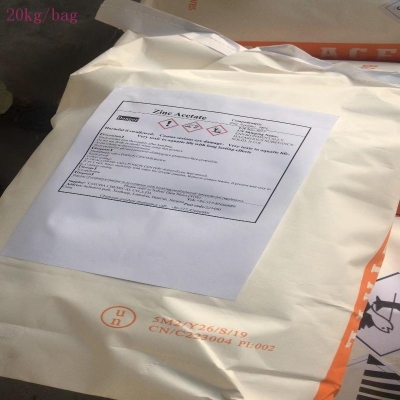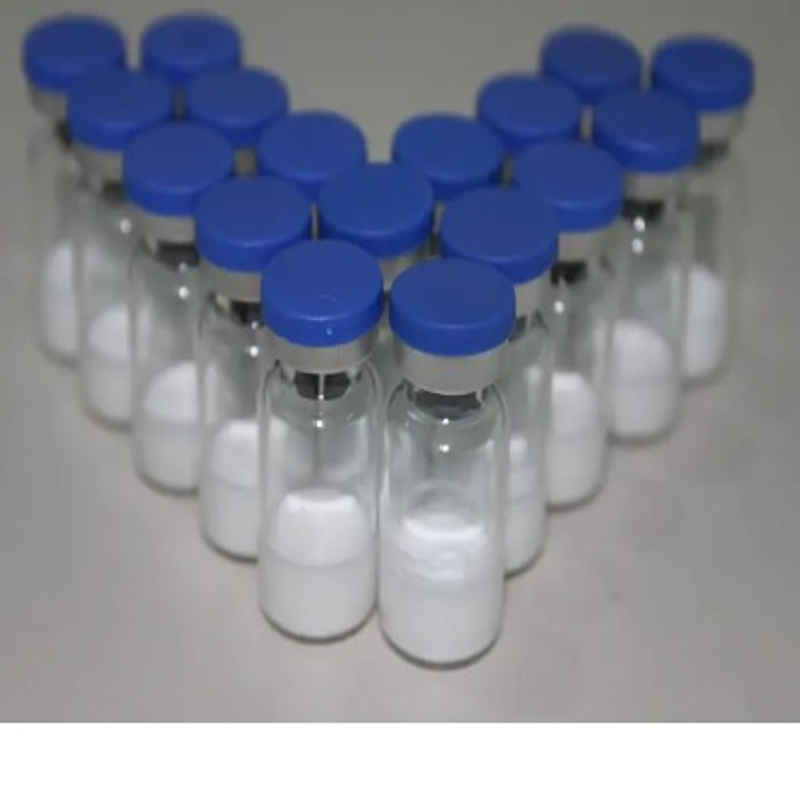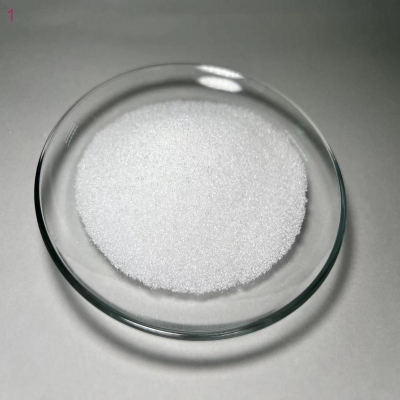-
Categories
-
Pharmaceutical Intermediates
-
Active Pharmaceutical Ingredients
-
Food Additives
- Industrial Coatings
- Agrochemicals
- Dyes and Pigments
- Surfactant
- Flavors and Fragrances
- Chemical Reagents
- Catalyst and Auxiliary
- Natural Products
- Inorganic Chemistry
-
Organic Chemistry
-
Biochemical Engineering
- Analytical Chemistry
-
Cosmetic Ingredient
- Water Treatment Chemical
-
Pharmaceutical Intermediates
Promotion
ECHEMI Mall
Wholesale
Weekly Price
Exhibition
News
-
Trade Service
In order to reduce the pollution caused by automobile exhaust to the atmospheric environment, China is currently implementing the National V emission standards
.
With the gradual implementation of the National Five Standards, urea, a traditional chemical product, is expected to radiate new vitality-automotive urea has become the focus of the industry
.
Urea for vehicles has great potential.
According to the requirements of the Ministry of Environmental Protection's National Five Standard Implementation Announcement, starting from January 1, 2018, all light-duty diesel vehicles manufactured, imported, sold and registered nationwide must meet the requirements of the National Five Standards
.
Compared with the National IV standard, the National V standard restricts the emission of nitrogen oxides (NOx) from diesel vehicles by 28%, and the total index of hydrocarbons and nitrogen oxides (HC+NOx) is stricter by 23%.
The particulate matter concentration (PM) limit has been increased by 82%, and the number of particulate matter (PN) detection has also been added
.
Under such circumstances, vehicle urea, as a diesel vehicle exhaust gas treatment product, has gradually entered the public eye
.
The so-called urea for vehicles of Kolansu refers to an aqueous solution of urea with a urea concentration of 32.
5% and ultrapure water as the solvent.
Its raw materials are urea crystals and ultrapure water
.
It is understood that heavy-duty trucks, passenger cars and other diesel vehicles must meet the National V emission standards, and appropriate selective catalytic reduction (SCR) systems must be selected for exhaust gas treatment
.
And this system must rely on the urea solution to treat the nitrogen oxides in the exhaust gas.
The ammonia produced by the urea solution in the high-temperature exhaust gasification of the engine is used as the reducing agent for the selective catalytic reduction of the exhaust gas of diesel motor vehicles.
The nitrogen oxides are converted into harmless water vapor and nitrogen, reducing emissions
.
Therefore, vehicle urea can be said to be an indispensable product for heavy-duty trucks, buses and other diesel vehicles to meet the National V emission standards
.
In order to make diesel vehicle exhaust emissions meet the National V standards, the consumption of vehicle urea is about 4% to 6% of diesel consumption.
In 2015, my country's apparent diesel consumption was 170 million tons, calculated at a median value of 5% , The annual demand for vehicle urea is 8.
5 million tons
.
As the second largest automobile market in the world, the number of heavy trucks in China is more than 23 million, and the annual sales volume of national V standard heavy trucks is 700,000.
Each heavy truck consumes 2 tons of vehicle urea per year.
The future vehicle urea market The rise in demand will be explosive
.
From the perspective of market capacity and supervision, from the perspective of national policy orientation, the automotive urea market has huge potential
.
However, the specific size of this market also depends on the level of supervision after the implementation of the National V exhaust emission standards
.
At present, National V vehicles generally use the on-board automatic diagnostic system (OBD) for motor vehicles to monitor exhaust emissions in real time
.
When the diesel vehicle is not filled with automotive urea, the OBD system will immediately issue a warning
.
As the process of phasing out yellow-label vehicles in various places accelerates, the market capacity of automotive urea will further increase
.
At present, domestic automotive urea production enterprises are relatively scattered, some technologies are not good enough, and product quality is uneven
.
This causes problems such as crystallization and deposition of urea for vehicles in use
.
Under such circumstances, users will have distrust of car-use urea products, and will exclude formal enterprises
.
This is the biggest problem in the current automotive urea industry
.
In addition, in the early stage of the market, there was a price war, and the price was kept low, so that the regular enterprises could not sell the price
.
This has led to the lowest domestic car urea price in the world
.
In this regard, Klansu said that the company does not participate in a price war, but pays more attention to the improvement of product quality, so as to occupy the market with the effect of use
.
Supply channels are critical.
Industry insiders agree that channels are the key to vehicle urea sales
.
To smoothly promote the National V emission standards, one obstacle needs to be overcome, namely, the construction and popularization of urea filling stations
.
Currently, buses have fixed refueling points, and it is relatively easy to build supporting urea refueling stations
.
However, for trucks that are more widely distributed and run more dispersed, the construction of urea filling stations will face problems.
.
If the construction of filling stations cannot be widely used, it will be difficult for truck users to fill urea
.
At present, Klanso is cooperating with multiple parties to build refilling sites in many places across the country to solve the problem of user refilling difficulties
.
Kelansu now has an annual production line of 600,000 tons of automotive urea, producing 10L, 200L, 1000L and other packaging specifications of automotive urea products, suitable for different customers
.
In terms of sales channels, Klanzol not only connects with a number of automakers, bus companies, logistics fleets, etc.
, but also directly provides corresponding products and service solutions, serving key customers through direct sales, and at the same time, it also leverages the power of dealers.
, To realize social replenishment and seize the automotive urea market
.
.
With the gradual implementation of the National Five Standards, urea, a traditional chemical product, is expected to radiate new vitality-automotive urea has become the focus of the industry
.
Urea for vehicles has great potential.
According to the requirements of the Ministry of Environmental Protection's National Five Standard Implementation Announcement, starting from January 1, 2018, all light-duty diesel vehicles manufactured, imported, sold and registered nationwide must meet the requirements of the National Five Standards
.
Compared with the National IV standard, the National V standard restricts the emission of nitrogen oxides (NOx) from diesel vehicles by 28%, and the total index of hydrocarbons and nitrogen oxides (HC+NOx) is stricter by 23%.
The particulate matter concentration (PM) limit has been increased by 82%, and the number of particulate matter (PN) detection has also been added
.
Under such circumstances, vehicle urea, as a diesel vehicle exhaust gas treatment product, has gradually entered the public eye
.
The so-called urea for vehicles of Kolansu refers to an aqueous solution of urea with a urea concentration of 32.
5% and ultrapure water as the solvent.
Its raw materials are urea crystals and ultrapure water
.
It is understood that heavy-duty trucks, passenger cars and other diesel vehicles must meet the National V emission standards, and appropriate selective catalytic reduction (SCR) systems must be selected for exhaust gas treatment
.
And this system must rely on the urea solution to treat the nitrogen oxides in the exhaust gas.
The ammonia produced by the urea solution in the high-temperature exhaust gasification of the engine is used as the reducing agent for the selective catalytic reduction of the exhaust gas of diesel motor vehicles.
The nitrogen oxides are converted into harmless water vapor and nitrogen, reducing emissions
.
Therefore, vehicle urea can be said to be an indispensable product for heavy-duty trucks, buses and other diesel vehicles to meet the National V emission standards
.
In order to make diesel vehicle exhaust emissions meet the National V standards, the consumption of vehicle urea is about 4% to 6% of diesel consumption.
In 2015, my country's apparent diesel consumption was 170 million tons, calculated at a median value of 5% , The annual demand for vehicle urea is 8.
5 million tons
.
As the second largest automobile market in the world, the number of heavy trucks in China is more than 23 million, and the annual sales volume of national V standard heavy trucks is 700,000.
Each heavy truck consumes 2 tons of vehicle urea per year.
The future vehicle urea market The rise in demand will be explosive
.
From the perspective of market capacity and supervision, from the perspective of national policy orientation, the automotive urea market has huge potential
.
However, the specific size of this market also depends on the level of supervision after the implementation of the National V exhaust emission standards
.
At present, National V vehicles generally use the on-board automatic diagnostic system (OBD) for motor vehicles to monitor exhaust emissions in real time
.
When the diesel vehicle is not filled with automotive urea, the OBD system will immediately issue a warning
.
As the process of phasing out yellow-label vehicles in various places accelerates, the market capacity of automotive urea will further increase
.
At present, domestic automotive urea production enterprises are relatively scattered, some technologies are not good enough, and product quality is uneven
.
This causes problems such as crystallization and deposition of urea for vehicles in use
.
Under such circumstances, users will have distrust of car-use urea products, and will exclude formal enterprises
.
This is the biggest problem in the current automotive urea industry
.
In addition, in the early stage of the market, there was a price war, and the price was kept low, so that the regular enterprises could not sell the price
.
This has led to the lowest domestic car urea price in the world
.
In this regard, Klansu said that the company does not participate in a price war, but pays more attention to the improvement of product quality, so as to occupy the market with the effect of use
.
Supply channels are critical.
Industry insiders agree that channels are the key to vehicle urea sales
.
To smoothly promote the National V emission standards, one obstacle needs to be overcome, namely, the construction and popularization of urea filling stations
.
Currently, buses have fixed refueling points, and it is relatively easy to build supporting urea refueling stations
.
However, for trucks that are more widely distributed and run more dispersed, the construction of urea filling stations will face problems.
.
If the construction of filling stations cannot be widely used, it will be difficult for truck users to fill urea
.
At present, Klanso is cooperating with multiple parties to build refilling sites in many places across the country to solve the problem of user refilling difficulties
.
Kelansu now has an annual production line of 600,000 tons of automotive urea, producing 10L, 200L, 1000L and other packaging specifications of automotive urea products, suitable for different customers
.
In terms of sales channels, Klanzol not only connects with a number of automakers, bus companies, logistics fleets, etc.
, but also directly provides corresponding products and service solutions, serving key customers through direct sales, and at the same time, it also leverages the power of dealers.
, To realize social replenishment and seize the automotive urea market
.







